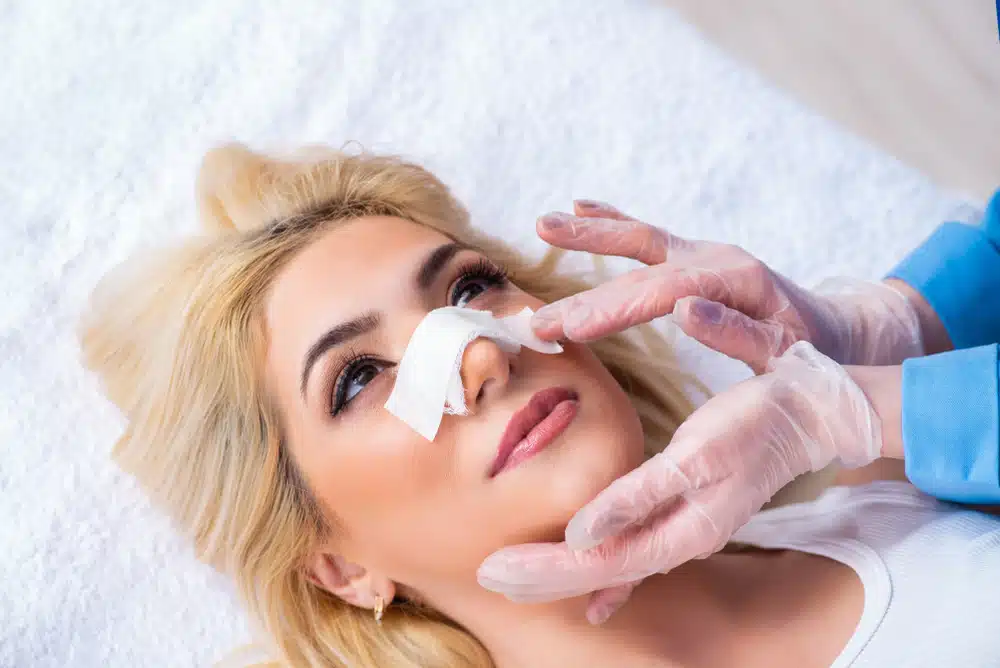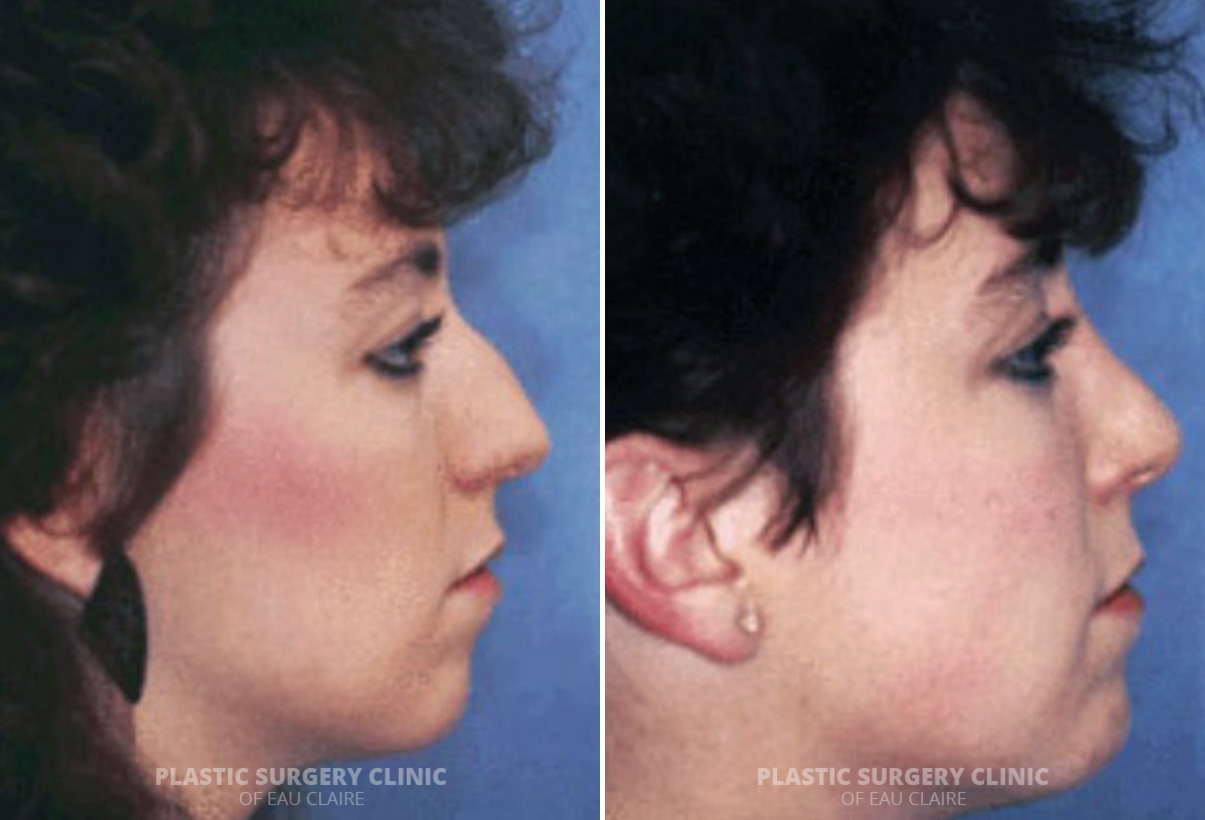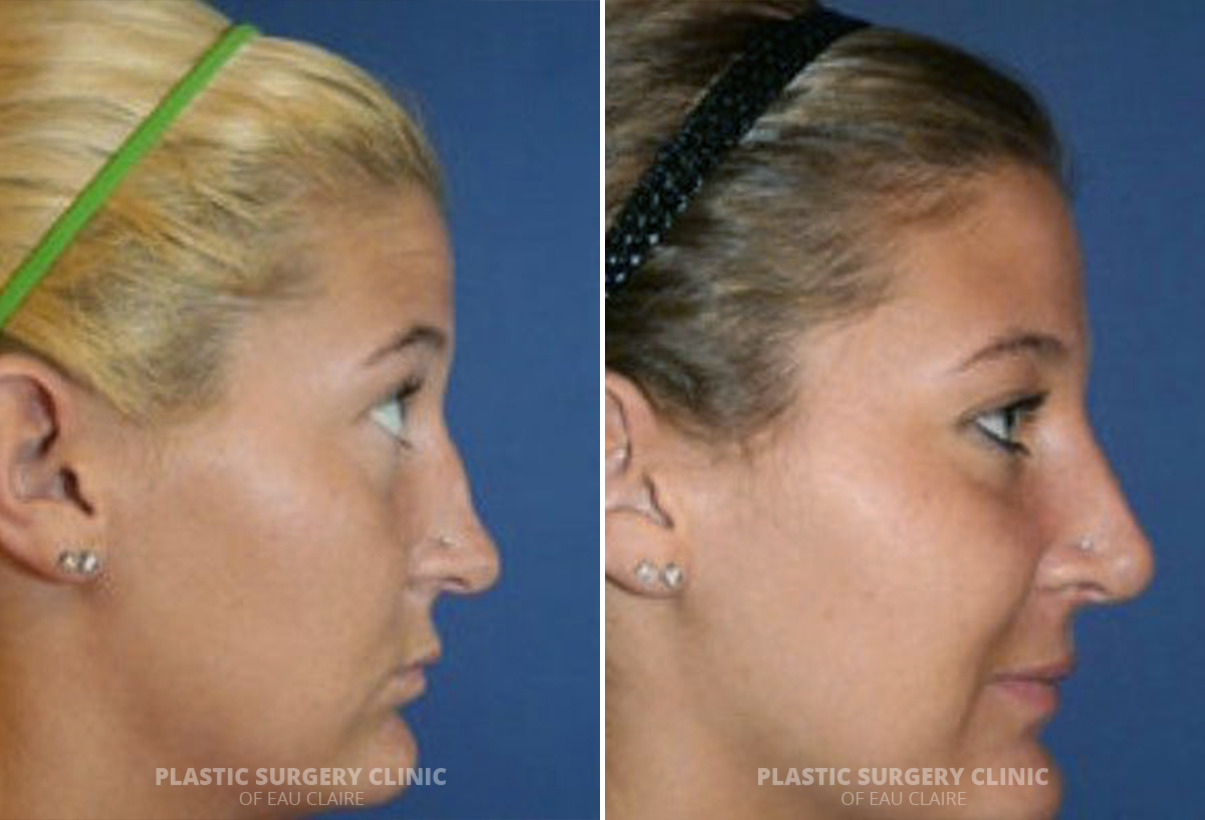Have you recently undergone rhinoplasty and noticed some bleeding? It can feel alarming, especially when you’re unsure what’s considered normal during an optimal recovery process. This post is here to guide you through what to expect, when to stay calm, and when to reach out to your surgeon.
Nosebleeds after a nose job can be part of the healing process, but understanding the difference between expected symptoms and red flags is crucial. Let’s walk through everything you need to know so you can focus on a smooth, stress-free recovery.

Is It Normal for the Nose to Bleed After Rhinoplasty?
Yes, it is normal to experience some postoperative nosebleeds after a rhinoplasty procedure; it’s one of the most common complications of this cosmetic surgery. Some blood-tinged mucus or oozing is expected for a few days, and it’s common to need to dab the nose with gauze. However, prolonged, heavy bleeding that is often accompanied by other concerning symptoms that we will explore further below will make it vital to seek medical advice.
How Long Does Your Nose Bleed After Rhinoplasty?
In most cases, light or mild bleeding or spotting from the nose can occur for the first few days following rhinoplasty. This typically involves some blood-tinged mucus or mild oozing, especially within the first 48 to 72 hours after surgery. Most patients find that this bleeding gradually subsides on its own without intervention.
By the end of the first week, any active bleeding should significantly reduce, if not stop altogether. However, small traces of dried blood or pinkish discharge may still be present as your nasal tissues continue to heal. If bleeding resumes or worsens after this period, it may be a sign of irritation or complications and should be assessed by your surgeon.
Immediate Steps to Take When a Nosebleed Occurs During Healing
Experiencing a nosebleed during your rhinoplasty recovery can be unsettling, but knowing how to respond calmly and effectively can make all the difference. The first few moments are key in managing the situation and preventing further irritation or complications. In the following steps, we’ll walk you through simple yet essential actions to take if bleeding starts. These responses are easy to remember, practical to implement, and can help you stay in control while protecting your healing nose.
Stay Calm and Collected
The first thing to do during a post-surgical nosebleed is to stay calm. Panic can raise your heart rate and blood pressure, both of which can worsen the bleeding. By staying relaxed, you’re helping your body stay in a stable state, which supports clotting and allows your nose to settle naturally.
Sit Upright and Lean Forward
Once you’ve steadied yourself, make sure to sit upright and lean your body slightly forward. This position helps reduce blood pressure in the nasal vessels and prevents blood from flowing down the throat, which can cause nausea or vomiting. Tilting forward also allows any blood to exit the nostrils safely, making it easier to monitor the bleeding.
Applying Pressure
If bleeding continues, gently pinch the soft part of your nose just below the bridge. Hold the pressure for at least 10 minutes without releasing, even if the bleeding seems to stop. This can help compress the vessels inside the nose and encourage clotting. Be cautious not to press directly on the bridge or disturb the surgical site.
Apply Cold Compress
A cold compress can be a helpful tool in controlling nasal bleeding after rhinoplasty surgery. Gently placing an ice pack or cold compress across the bridge of the nose or the upper cheeks can constrict blood vessels and reduce blood flow. Always use a soft cloth or towel between your skin and the cold pack, and avoid applying pressure directly to your nose.
Are You Ready For A Consultation?
Join our satisfied clients who’ve experienced safe, effective treatments
Taking Precautions to Prevent Further Bleeding After Nose Surgery
Staying proactive during recovery can help prevent unnecessary bleeding and ensure your healing stays on track. Below are essential habits and tips to follow in the weeks after surgery to lower the risk of nosebleeds.
Control Your Blood Pressure
Elevated blood pressure can increase the risk of post-operative bleeding, especially in the sensitive nasal area. To minimize this risk, avoid strenuous activity and emotional stress, and follow your surgeon’s guidelines regarding physical restrictions. If you have a history of hypertension, make sure your condition is well-managed with prescribed medications and regular monitoring during your recovery period.
Avoid Blowing Your Nose
Blowing your nose too soon after surgery can disrupt healing tissues and trigger bleeding. Even gentle pressure can be enough to reopen blood vessels or dislodge clots that are helping your nose recover. Instead of blowing, gently dab any discharge and use saline sprays as directed by your surgeon to keep your nasal passages clear and moist.
Sleep in the Correct Position
The way you sleep during your recovery can significantly impact nasal healing and help reduce the risk of bleeding. It’s best to sleep with your head elevated, typically using two or more pillows or a wedge pillow. This position improves circulation and minimizes swelling, while also preventing blood from pooling in the nasal area.
Use Humidifiers and Air Filters
Dry air can irritate healing nasal tissues and increase the risk of bleeding. Using a humidifier in your bedroom keeps the air moist, which soothes your nasal passages and supports healing. Additionally, air filters can reduce airborne particles and allergens that might otherwise trigger sneezing or irritation.
Keep the Nasal Passages Moist
Dry nasal passages are more prone to irritation and bleeding during the recovery process. Using a saline nasal spray or gel, as recommended by your surgeon, helps avoid nasal dryness and keeps the inside of your nose comfortably moist. This not only promotes healing but also prevents scabbing and cracking that could lead to renewed bleeding.
Follow Your Post-operative Instructions
Your surgeon’s post-operative guidelines are specifically designed to support healing and prevent complications such as nosebleeds. These instructions often include activity limitations, medication schedules, wound care, and symptom monitoring. Following them closely gives your nose the best chance to heal correctly and reduces the risk of triggering bleeding or other setbacks.
Nasal Packing and Medications
In some cases, your surgeon may place nasal packing to control bleeding and support proper healing after rhinoplasty. It’s important not to disturb this packing unless instructed, as premature removal can cause fresh bleeding. Additionally, take all prescribed medications as directed, especially those intended to manage inflammation, prevent infection, or support blood clotting. Your surgeon may also prescribe topical or nasal medications such as Afrin (oxymetazoline) or phenylephrine to help constrict blood vessels and reduce bleeding—just be sure to use them exactly as instructed to avoid overuse or complications.
Primary Rhinoplasty Before and After Photos


* Each patient is unique and individual results may vary.
When to Seek Medical Attention
While occasional light bleeding can be part of normal healing, there are times when a rhinoplasty nosebleed may signal something more serious. Recognizing when to call your surgeon can protect your recovery and prevent complications from going unnoticed. Below are specific symptoms that warrant professional medical attention:
- Severe Pain: Intense, unrelenting pain that does not improve with prescribed medication may indicate a complication, such as an infection or internal issue, and should be addressed immediately.
- Excessive Bleeding: If blood loss becomes heavy and soaks through gauze repeatedly, or if you are unable to control it after following the recommended steps, it could be a sign of a broken blood vessel or other concern.
- Persistent Bleeding: Prolonged bleeding that continues for several days without noticeable improvement, even if it’s light, may point to delayed healing or irritation that needs evaluation.
- Fever or Signs of Infection: A fever, foul-smelling discharge, increasing redness, or swelling could indicate an infection, which may be contributing to abnormal bleeding. Prompt treatment can prevent further complications.
Work With an Expert Plastic Surgeon
Rhinoplasty is a delicate procedure, and even minor complications like nosebleeds need expert guidance to be handled properly. That’s why it’s critical to work with a board-certified plastic surgeon who understands both the aesthetic and medical complexities of nasal surgery.
Dr. Ember Ewings brings years of experience and specialized training to every procedure she performs. A graduate of the University of Wisconsin-Madison School of Medicine, she completed her plastic surgery residency at Saint Louis University and advanced fellowship training in craniofacial surgery in Memphis and Paris. Trust your care to a surgeon who combines deep expertise with a commitment to excellence. Call us at 715-833-2116 or visit our contact page to schedule a consultation.



